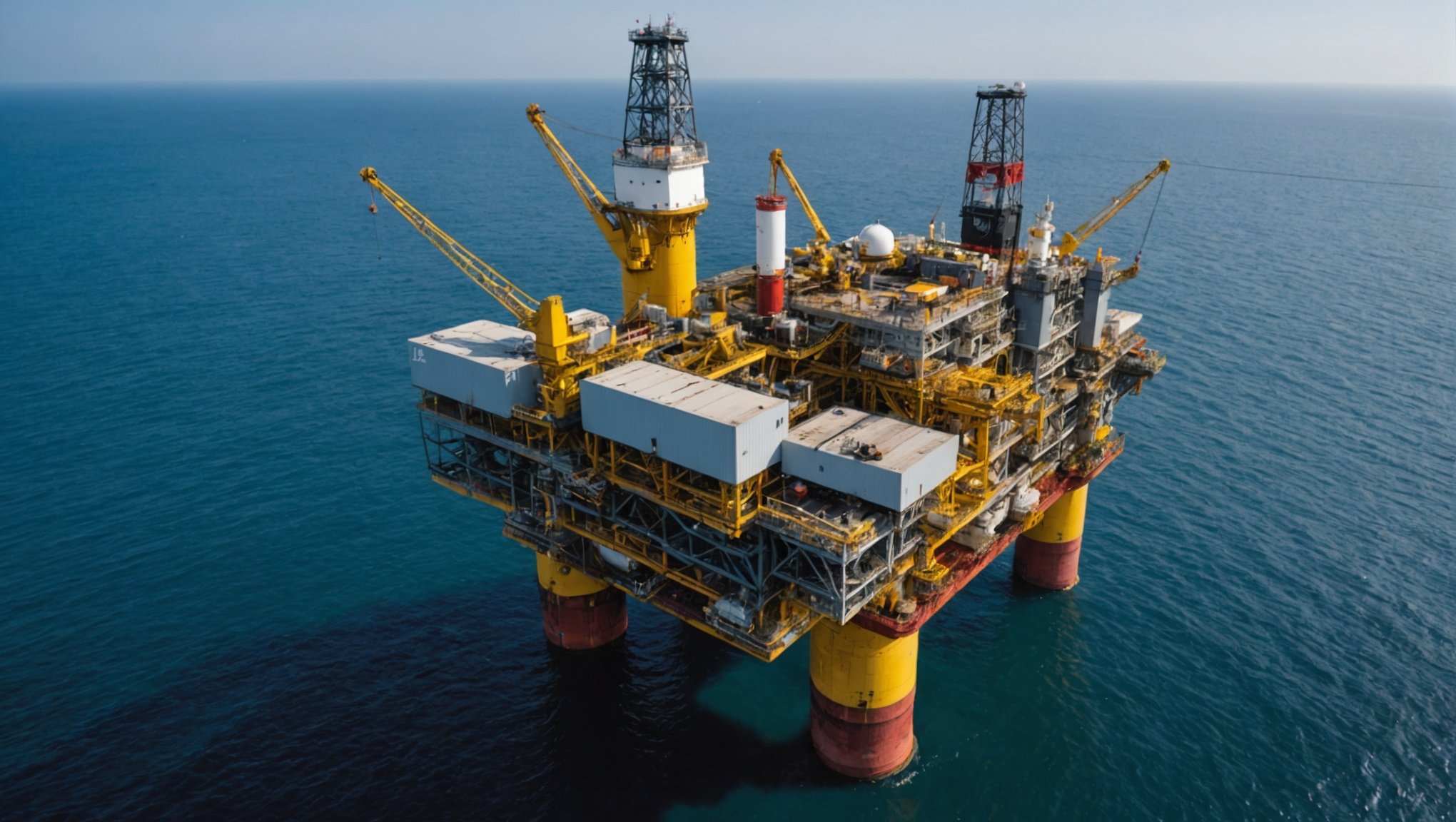Predictive maintenance in offshore oil and gas platforms has undergone a revolutionary shift with the advent of Artificial Intelligence (AI). The stakes are exorbitantly high in these environments; a single malfunction can have disastrous consequences, ranging from catastrophic environmental impacts to enormous financial losses. By leveraging AI, the industry has found a powerful tool to anticipate and mitigate machinery and system failures before they occur. This article delves into how AI can be effectively utilized for predictive maintenance in offshore oil and gas platforms, ensuring safety, efficiency, and cost-effectiveness.
Understanding Predictive Maintenance in the Offshore Oil and Gas Industry
Predictive maintenance involves using data analytics to predict when equipment failure might occur so that corrective maintenance can be performed just in time to prevent it. This proactive approach contrasts with the more traditional, reactive mode where repairs are only made after equipment breakdowns. In the offshore oil and gas industry, predictive maintenance is crucial due to the hostile and remote nature of the operating environment.
In the same genre : How to develop a secure blockchain platform for managing intellectual property rights?
AI models analyze data gathered from various sensors placed on equipment. These sensors monitor parameters like temperature, pressure, vibration, and more, generating a massive amount of data. AI’s role is to process this data in real-time, identify patterns, and predict future failures. The technology can also suggest optimal times for maintenance, thereby reducing downtime and operational costs.
Key Benefits
AI-driven predictive maintenance offers several benefits:
Have you seen this : How to ensure data privacy in AI-driven social media monitoring tools?
- Increased operational efficiency: By predicting failures, operations can continue without unexpected interruptions.
- Enhanced safety: Early detection of issues can prevent hazardous situations.
- Cost savings: Reducing unscheduled downtime and extending the life of the equipment are direct financial benefits.
The accurate predictions afforded by AI help streamline the whole maintenance process, turning it into a well-oiled machine.
The Role of AI in Data Collection and Analysis
AI’s effectiveness in predictive maintenance hinges on its ability to collect and analyze data accurately. Offshore oil and gas platforms are equipped with a multitude of sensors, which continuously gather data on various operational parameters. AI algorithms then process this data to identify patterns and anomalies that could signal impending failures.
Data Collection
The first step in AI-driven predictive maintenance is robust data collection. Sensors play a critical role here, capturing data related to pressure, temperature, vibration, and other operational metrics. This data is then transmitted to a centralized system where AI algorithms analyze it in real-time.
- Types of Sensors Used:
- Acoustic Sensors: Monitor sound emissions to detect anomalies.
- Temperature Sensors: Keep track of operational temperatures of machinery.
- Vibration Sensors: Measure equipment vibration, which can indicate wear and tear.
- Pressure Sensors: Monitor fluid pressure within systems to ensure proper functioning.
Data Analysis
Once the data is collected, it is analyzed using machine learning algorithms and other AI techniques. These algorithms are trained to recognize patterns and discrepancies that might indicate a looming failure.
- AI Techniques Used:
- Machine Learning: Uses historical data to train models that can predict future failures.
- Deep Learning: More advanced than machine learning, it can analyze unstructured data and identify complex patterns.
- Natural Language Processing (NLP): Can analyze maintenance logs and reports to identify recurring issues.
By combining these techniques, AI can offer incredibly accurate predictions, enabling timely maintenance interventions.
Implementation Challenges and Solutions
While the benefits of AI-driven predictive maintenance are compelling, implementing such a system is not without challenges. Offshore oil and gas platforms present a unique set of hurdles, but these can be effectively managed with strategic planning and robust technology.
Challenges
- Data Quality: Poor data quality can lead to inaccurate predictions. Ensuring data integrity is crucial.
- Integration Issues: Integrating AI systems with existing infrastructure can be complex and costly.
- Cybersecurity Risks: As data is transmitted and analyzed, it becomes susceptible to cyber-attacks.
- Skill Gap: There is often a lack of skilled personnel to manage and interpret AI systems.
Solutions
To overcome these challenges, a multi-faceted approach is required:
- Data Quality Management: Implement rigorous data validation and cleansing processes to maintain data quality.
- Integration Planning: Work with experienced vendors to ensure smooth integration of AI systems with existing infrastructure.
- Enhanced Cybersecurity: Invest in robust cybersecurity measures to protect data.
- Training Programs: Develop training programs to upskill existing staff and bring in external expertise where necessary.
By addressing these challenges head-on, organizations can harness the full potential of AI for predictive maintenance.
Case Studies: Success Stories
Real-world applications of AI in predictive maintenance for offshore oil and gas platforms provide compelling evidence of its effectiveness. Here, we explore some notable success stories that highlight the transformative impact of this technology.
Case Study 1: Shell’s AI-Powered Predictive Maintenance System
Shell, one of the leading players in the oil and gas industry, has successfully implemented an AI-powered predictive maintenance system across its offshore platforms. By leveraging machine learning algorithms, the company has been able to predict equipment failures with remarkable accuracy.
- Outcome:
- Reduced Downtime: Shell reported a significant reduction in unplanned downtime, leading to increased operational efficiency.
- Cost Savings: The system helped save millions of dollars in maintenance and operational costs.
- Enhanced Safety: Early detection of potential failures contributed to a safer working environment.
Case Study 2: BP’s Use of AI and IoT
BP has integrated AI with the Internet of Things (IoT) to monitor and maintain its offshore equipment. The company uses sensors connected to an AI system to collect and analyze data in real-time.
- Outcome:
- Increased Equipment Lifespan: By accurately predicting maintenance needs, BP extended the lifespan of its critical equipment.
- Operational Efficiency: The AI system enabled more efficient maintenance scheduling, minimizing disruptions.
- Improved Decision-Making: Real-time data analysis provided actionable insights, aiding better decision-making.
These case studies underscore the transformative potential of AI in predictive maintenance, demonstrating tangible benefits in terms of operational efficiency, cost savings, and safety.
Future Trends and Innovations
The field of AI-driven predictive maintenance is continually evolving, with new trends and innovations emerging that promise to further enhance its capabilities. As technology advances, the offshore oil and gas industry stands to gain even more from these developments.
Trends
- Edge Computing: As AI algorithms become more sophisticated, there is a growing trend towards edge computing. This involves processing data closer to the source, reducing latency and enabling real-time decision-making.
- AI and Digital Twins: Digital twin technology, which creates a virtual replica of physical assets, is being increasingly integrated with AI. This allows for more accurate simulations and predictions, enhancing the effectiveness of predictive maintenance.
- AI and Blockchain: The combination of AI and blockchain technology offers enhanced data security and transparency. This is particularly beneficial in maintaining the integrity of data used for predictive maintenance.
Innovations
- Autonomous Drones: Drones equipped with AI capabilities are being used for inspections and data collection in hard-to-reach areas of offshore platforms. This not only improves safety but also enhances the accuracy of data collected.
- AI-Driven Maintenance Robots: Robots powered by AI are being developed to perform maintenance tasks autonomously. These robots can operate in hazardous conditions, reducing the risk to human personnel.
- AI-Powered Predictive Analytics Platforms: New platforms are being developed that offer more advanced predictive analytics capabilities. These platforms leverage machine learning, deep learning, and other AI techniques to provide more accurate and actionable insights.
The future of AI-driven predictive maintenance in offshore oil and gas platforms looks promising, with continuous advancements and innovations set to further enhance its efficacy and impact.
In conclusion, the implementation of AI for predictive maintenance in offshore oil and gas platforms represents a significant leap forward in the industry. By leveraging advanced data collection and analysis techniques, AI enables more accurate predictions of equipment failures, leading to increased operational efficiency, enhanced safety, and substantial cost savings. Despite the challenges associated with its implementation, the benefits far outweigh the hurdles, as demonstrated by successful case studies from industry leaders like Shell and BP. As technology continues to evolve, the future holds even greater promise for AI-driven predictive maintenance, with emerging trends and innovations set to further enhance its capabilities. Therefore, for those in the offshore oil and gas industry, embracing AI for predictive maintenance is not just an option but a necessity for staying ahead in a competitive and high-stakes environment.











